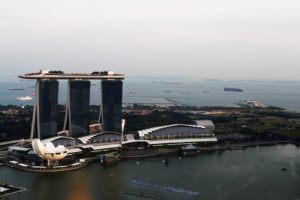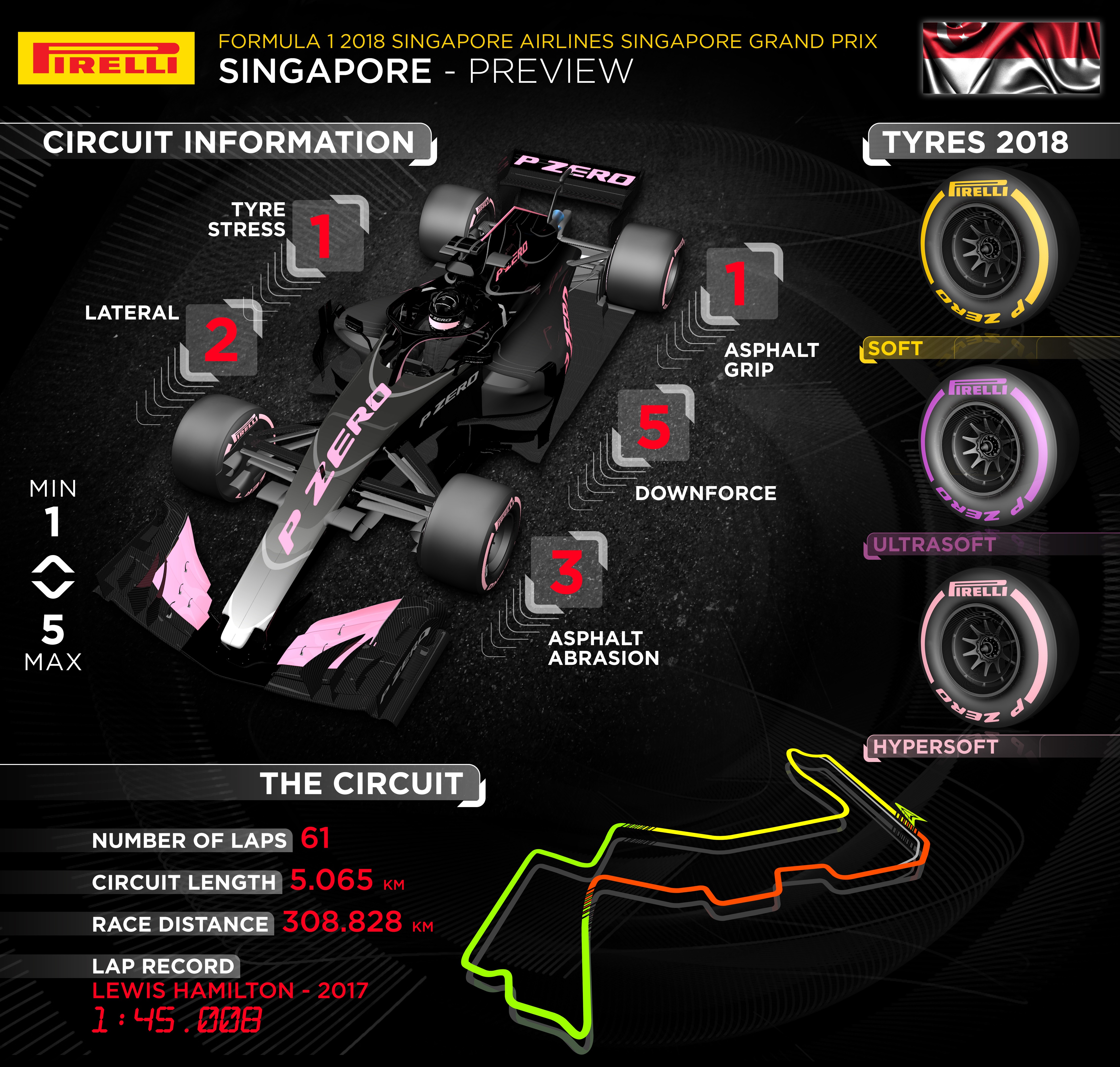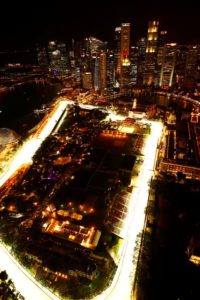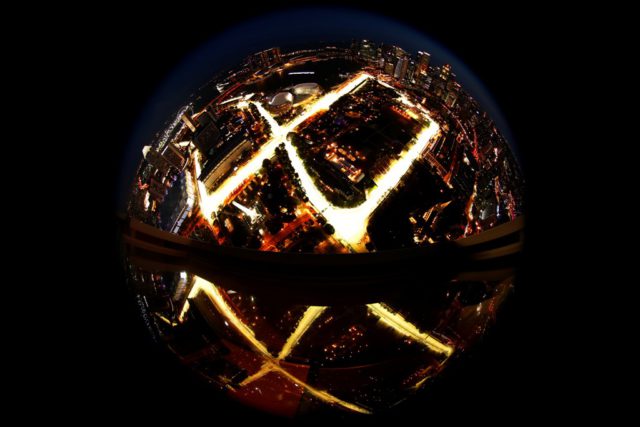The Singapore Grand prix is the 15th round of the 2018 Formula 1 World Championship.

Total number of race laps: 61
Complete race distance: 308.828 kilometres (191.897 miles)
Pit lane speed limit: 60 kph (37 mph)
This 5.065-kilometer (3.147-mile), 23-turn circuit has hosted Formula One since 2008, with last year’s Singapore Grand Prix serving as the venue’s milestone 10th grand prix.
Lewis Hamilton holds the race lap record at Marina Bay Street Circuit (1:45.008), set last year with Mercedes.
Sebastian Vettel holds the qualifying lap record at Marina Bay Street Circuit (1:39.491). He set it last year with Scuderia Ferrari in Q3.
The Singapore Grand Prix at Marina Bay Street Circuit debuted in 2008. It made history as the first night race in Formula One. Today, Singapore is one of the three night races on the Formula One schedule. The others are Bahrain and Abu Dhabi. Singapore’s debut was massively successful and remains hugely popular among drivers and fans alike, which explains why it’s no longer the only night race in Formula One.

With the famous Singapore skyline serving as a backdrop, the Marina Bay Street Circuit boasts one of the most spectacular environments in Formula One. Powerful lighting systems allow drivers to clearly navigate the track while providing fans a heightened sense of speed with sparks flying from the cars’ underbodies and the lights reverberating from their sinewy shapes. The harborside location makes Singapore a modern-day Monaco, and its 23 turns are the most of any Formula One venue.

DYK? The Singapore Grand Prix is the longest race of the year in terms of duration
Every Formula One race at Marina Bay Street Circuit has come to within four minutes of the mandated two-hour time limit. Three races have been cut short of the scheduled 61-lap distance because of this limit. These were the races in 2012 (59 laps), 2014 (60 laps) and 2017 (58 laps). The longest Formula One race at Marina Bay Street Circuit was last year’s Singapore Grand Prix. It eclipsed the two-hour time limit by three minutes and 23 seconds. The previous record was from the 2015 Singapore Grand Prix, which ended 1 minute and 22 seconds past the two-hour limit. When the time limit comes into play, the leader is shown the checkered flag when he crosses the start/finish line at the end of the lap following the lap in which the two-hour period ended.
During the course of the Singapore Grand Prix, lows will range from 25-26 degrees Celsius (77-78 degrees Fahrenheit) to highs of 29-30 degrees Celsius (85-87 degrees Fahrenheit). Relative humidity ranges from 62 per cent (mildly humid) to 92 per cent (very humid). The dewpoint is varying from 22 degrees Celsius/72 degrees Fahrenheit (very muggy) to 26 degrees Celsius/78 degrees Fahrenheit (oppressive). The dewpoint is rarely below 21 degrees Celsius/69 degrees Fahrenheit (muggy) or above 27 degrees Celsius/80 degrees Fahrenheit (very oppressive). Typical wind speeds vary from 0-18 kph/0-11 mph (calm to gentle breeze), rarely exceeding 21 kph/13 mph (moderate breeze).
Saturdays just aren’t the same without scorching qualifying laps ?
Rewind the clock a year, as Vettel blasts around the #SingaporeGP circuit
Pole number 4 as a @ScuderiaFerrari, and his 49th overall in #F1 ? pic.twitter.com/SEmQvZVQzn
— Formula 1 (@F1) September 8, 2018
Focus points Slow-speed grip
Most of the corners are taken in either second or third gear, so getting the power down effectively at slow speeds is crucial to lap-time. This is particularly difficult at the start of the weekend when the asphalt is very dirty and slippery.
Unique difficulty The lights. The Singapore Grand Prix begins two hours after sunset. The track is lit up by 1,500 lamps, positioned six metres above the asphalt. The artificial light takes some getting used to by the drivers and, although the start of last year’s race was damp, the impact of a fully wet race on visibility has yet to be established.
Biggest challenge Heat and humidity. The ambient temperature rarely drops below 30 degrees and with humidity levels of around 85 per cent, this race is now the most physically demanding in F1. It’s also the longest race of the year, regularly exceeding the FIA’s two-hour time limit, and drivers expect to lose up to three kilos in sweat during the race.
Braking Heavy. There are 15 braking events per lap, which is more than at any other circuit in F1. The drivers spend, on average, 22s per lap on the brakes and the peak deceleration is 4.7g into Turn Seven.
Power The cars use 1.9kg of fuel per lap, which is high. Fuel consumption is a consideration for the teams at this race.
Aero Maximum downforce. The circuit’s average speed is only 8mph (13km/h) higher than at Monaco, so the engineering emphasis is on slow-speed grip, good turn-in and traction.
































